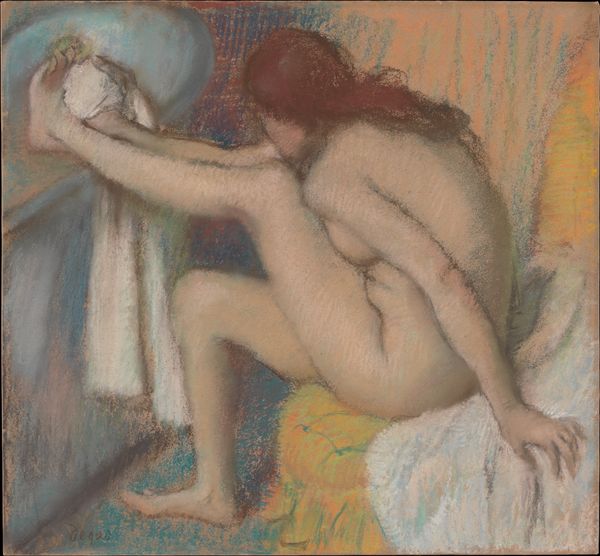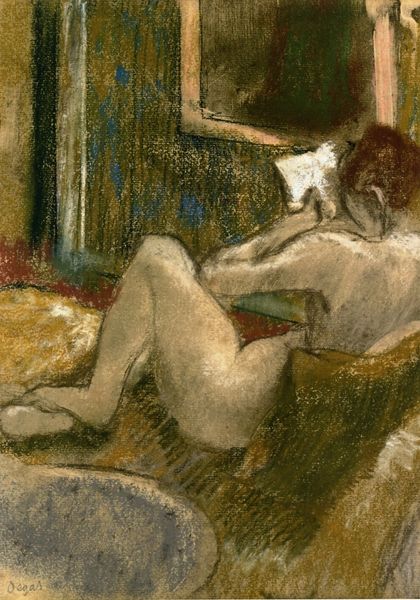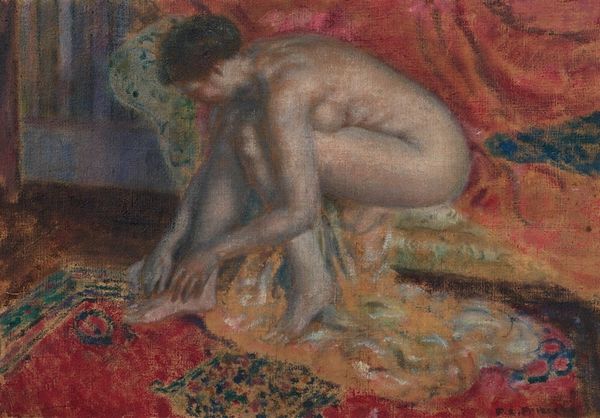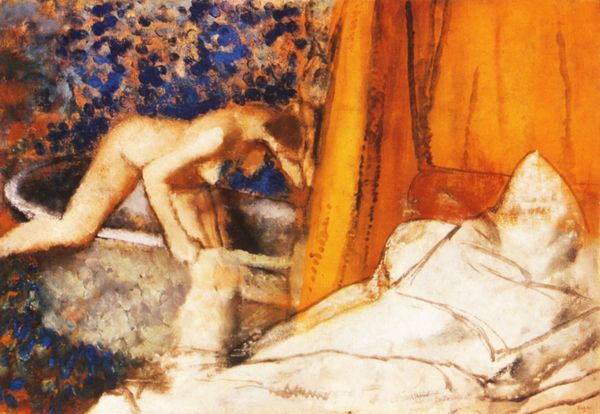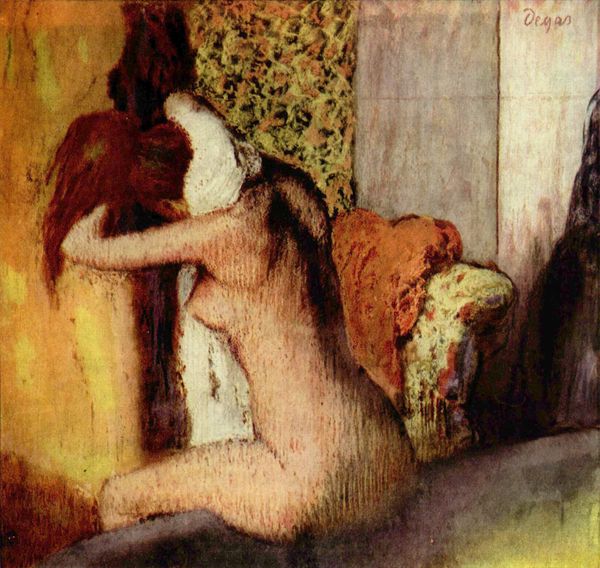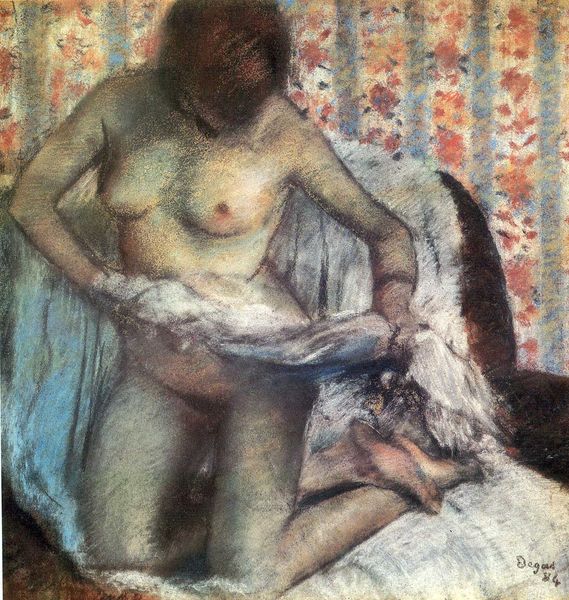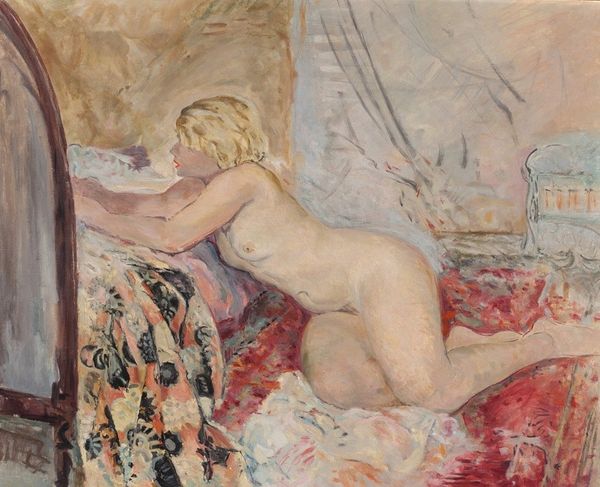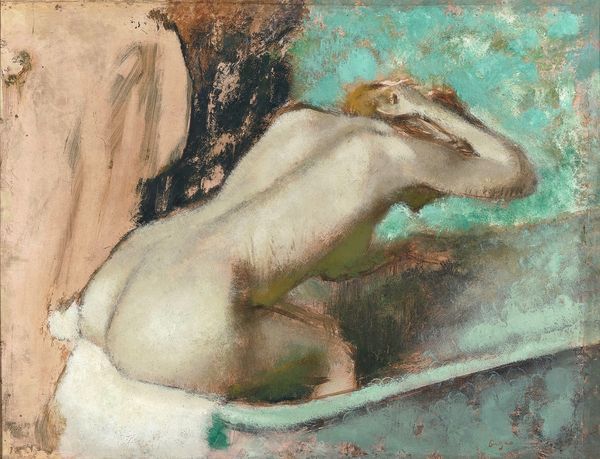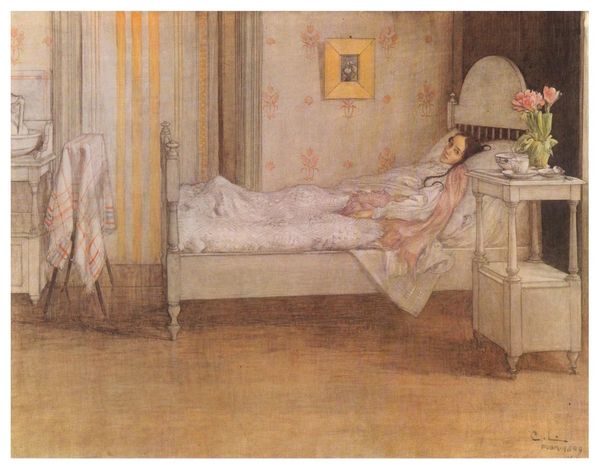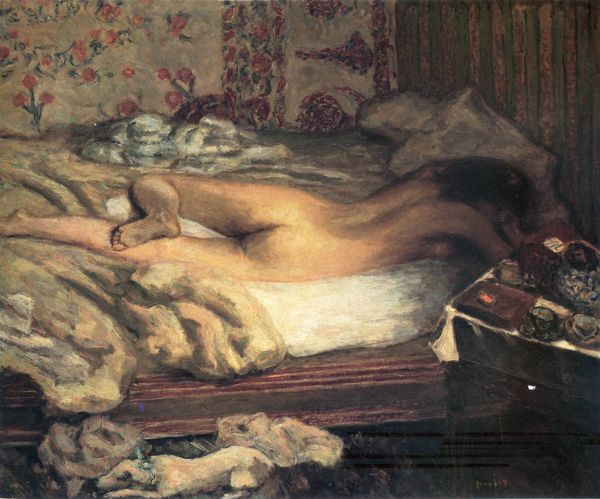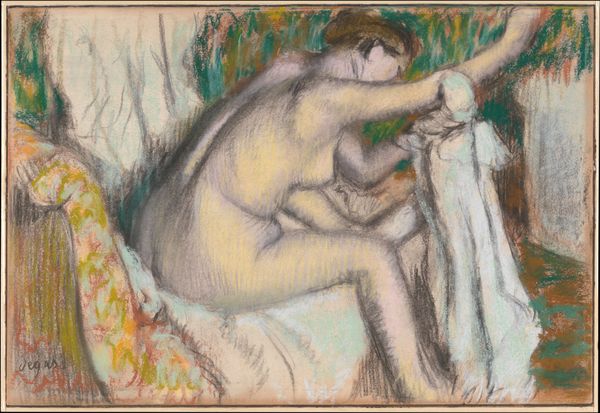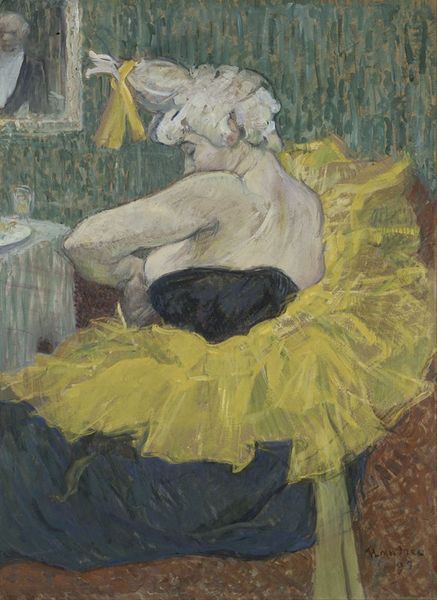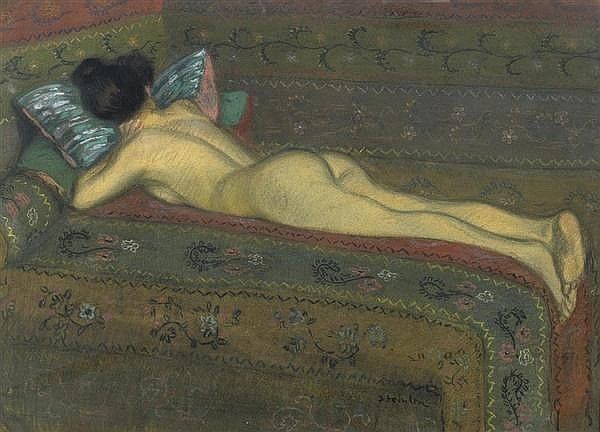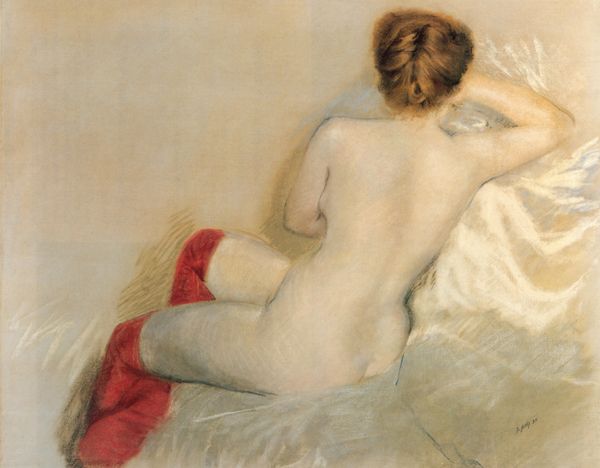
drawing, print, paper, pastel
#
portrait
#
gouache
#
drawing
# print
#
impressionism
#
paper
#
pastel
#
nude
Dimensions: 364 × 430 mm
Copyright: Public Domain
Editor: Here we have "Retiring," a pastel drawing by Edgar Degas, dating back to around 1883, and currently residing at The Art Institute of Chicago. The atmosphere feels so intimate, almost voyeuristic, like we're intruding on a very private moment. How do you interpret this work? Curator: This image, like many of Degas's works, explores the tension between the observed and the staged. Notice how the mundane act of retiring, or preparing for sleep, is imbued with symbolic weight. What do you make of the lamp? Editor: It almost looks like she’s turning it off, extinguishing light... hope, maybe? Curator: Perhaps. But also, consider light as a symbol of revelation, of truth. Degas often used artificial light sources. Here, the light exposes her vulnerability, her unguarded self. The drapery above is incredibly vibrant, but seems heavy. Do you think this detail bears any symbolic importance? Editor: I suppose it creates a feeling of confinement or enclosure... as if the space, the room itself, is pressing in on her. Curator: Exactly! And notice the downward gaze. She seems lost in introspection. Consider the societal pressures women faced in that era; beauty, domesticity... is she retiring *from* something beyond just the day? Does this invoke for you other images of the 'Sleeping Venus' tradition, and how it challenges that view? Editor: I see it now. She's not just a nude, but a figure wrestling with internal thoughts and societal expectations. Curator: Degas invites us to consider not just what we see, but the psychological landscape of the sitter, of women in general in 19th-century France. Editor: It's amazing how much depth can be found in such a seemingly simple scene. I'll definitely look at Degas's work differently now! Curator: Indeed! He uses familiar iconography to question familiar realities. It is a subtle way to communicate and build on art traditions.
Comments
No comments
Be the first to comment and join the conversation on the ultimate creative platform.
